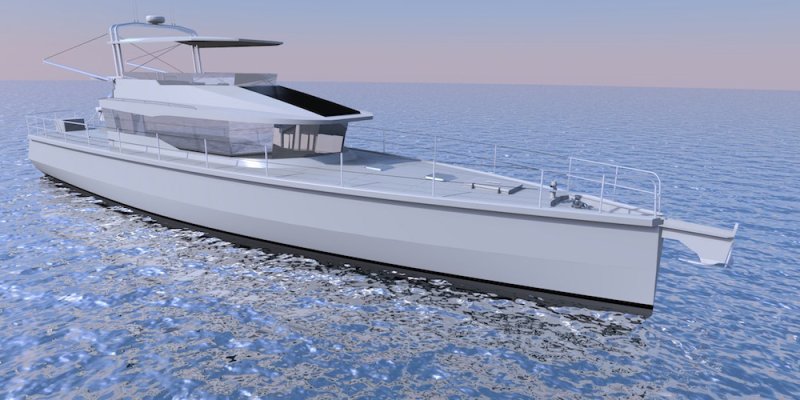ChristineKling
Veteran Member
Hello everyone,
My husband Wayne and I have been cruising the Pacific aboard our 52' steel motorsailer, LEARNATIVITY, and we have decided to make the switch to a fast passage maker.
Some of you may know of Dennis Harjamaa of Artnautica, designer of the LRC 58. Dennis is in the process of designing a new big sister to the 58 for us. It's early in the process, but she will be a fascinating boat. We have some early renderings. I'll attach one view. This is all subject to change at this point as we continue to work with Dennis.
We are currently in Fiji with our current boat LEARNATIVITY listed for sale. If she has not sold by the end of September, we intend to take off and sail her to the Med. via the Red Sea. In spite of recent events, it remains our first choice to build the new boat in Turkey, partly being built in a yard in Antalya and partly built by us. If anyone here has experience with building a boat in Turkey or with building in aluminum, I'd be especially happy to connect with you.
I hope to learn lots here. So happy to have found this forum.
Christine
My husband Wayne and I have been cruising the Pacific aboard our 52' steel motorsailer, LEARNATIVITY, and we have decided to make the switch to a fast passage maker.
Some of you may know of Dennis Harjamaa of Artnautica, designer of the LRC 58. Dennis is in the process of designing a new big sister to the 58 for us. It's early in the process, but she will be a fascinating boat. We have some early renderings. I'll attach one view. This is all subject to change at this point as we continue to work with Dennis.
We are currently in Fiji with our current boat LEARNATIVITY listed for sale. If she has not sold by the end of September, we intend to take off and sail her to the Med. via the Red Sea. In spite of recent events, it remains our first choice to build the new boat in Turkey, partly being built in a yard in Antalya and partly built by us. If anyone here has experience with building a boat in Turkey or with building in aluminum, I'd be especially happy to connect with you.
I hope to learn lots here. So happy to have found this forum.
Christine

